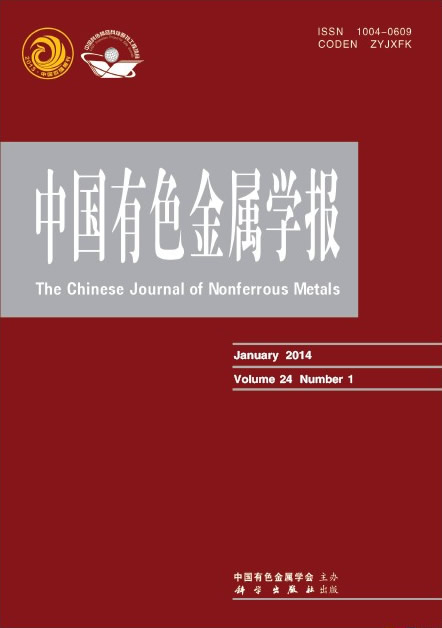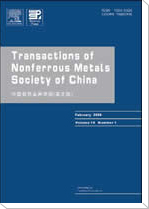(1. 烟台南山学院 材料科学与工程学院,烟台,265713;
2. 中南大学 材料科学与工程学院,长沙 410083;
3. 中南大学 粉末冶金国家重点实验室,长沙 410083)
摘 要: 基于密度泛函理论的第一性原理方法,计算研究了7系铝合金亚稳η''''相?稳定η2相转变过程中主元素的行为和作用。计算结果表明:η''''?η2相转变过程伴随Al原子的排出,主要源于基体中Cu和过剩Mg原子对η''''相中Al原子的固溶置换。Cu和Mg固溶可以提高η''''相的稳定性,但过量固溶可能会抑制η''''?η2相转变,甚至形成其他富Cu/Mg析出相。实验表征的η2/Al界面应为Zn终端型结构。基体中的Cu、过剩Mg和Zn均会偏析到界面上的间隙位,促使η2相的长大。
关键字: η''相;η2相;相转变;主合金元素;界面;第一性原理
(1. School of Materials Science and Engineering, Yantai Nanshan University, Yantai 265713, China;
2. School of Materials Science and Engineering, Central South University, Changsha 410083, China;
3. State Key Laboratory of Powder Metallurgy, Central South University, Changsha 410083, China)
Abstract:The behaviors and roles of major alloying elements on the metastable η''''-to-stable η2 phase transformation in aged 7XXX Al alloys were investigated using density-functional-theory (DFT) based first-principles methods. Our calculations suggested the following findings. The η''''→η2 transformation is accompanied with the consistant release of Al atoms from η'''', mainly due to the strong Cu and Mg substitution of Al inside η''''. These substitutions help in stablizing η'''' in the matrix, but excessive substitution may inhibit η''''→η2 transformation and even induce other Cu/Mg-rich precipitate phases. The experimentally-observed η2/Al interface has a Zn-terminated structure. Cu, excess Mg and Zn in the matrix all tend to segregate to the interstitial sites of the interface, enabling the growth of η2.
Key words: η'' phase; η phase; phase transformation; major alloying element; interface; first-principles


